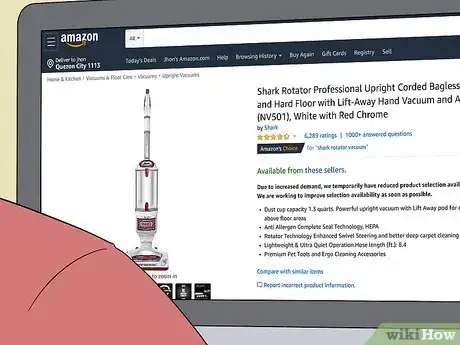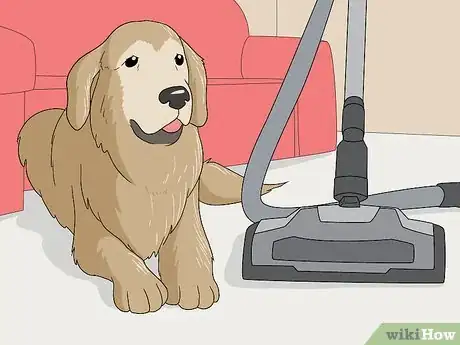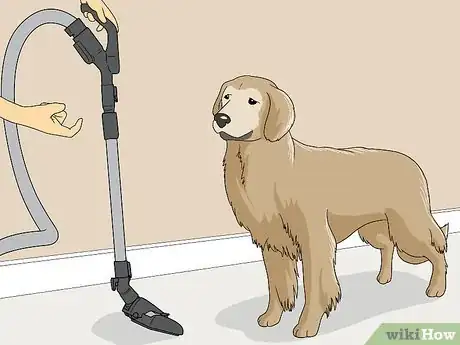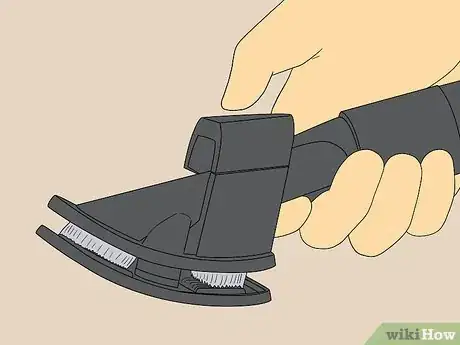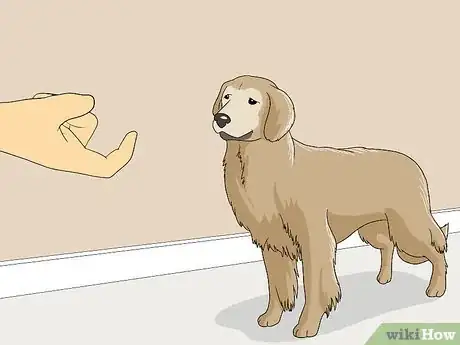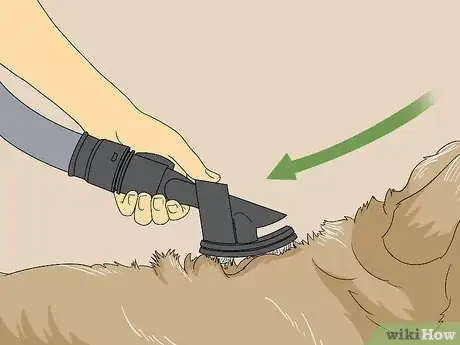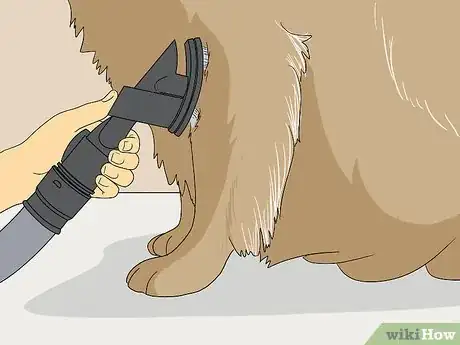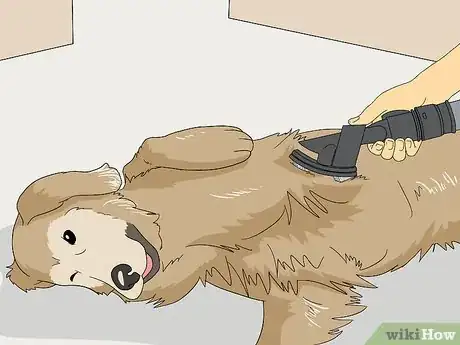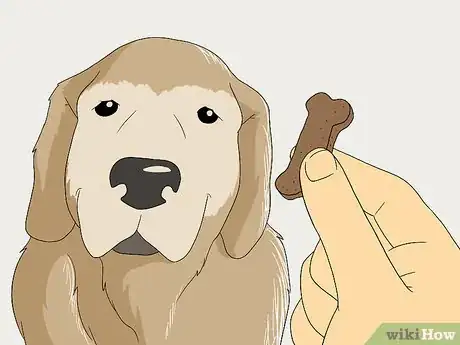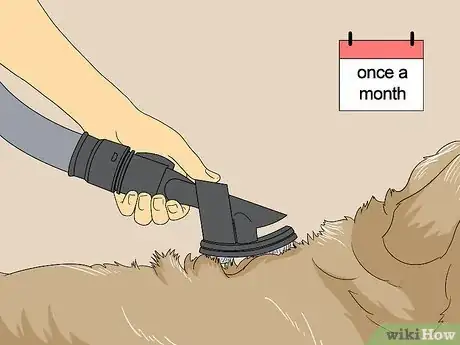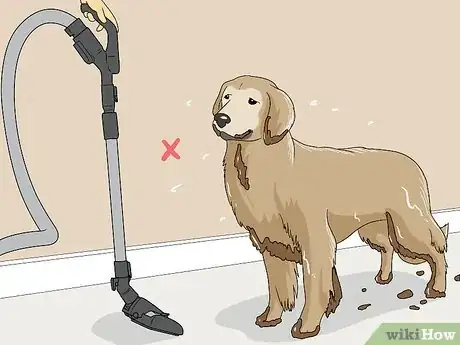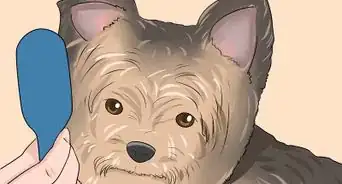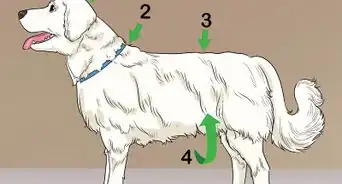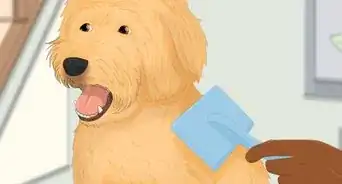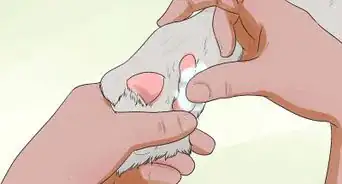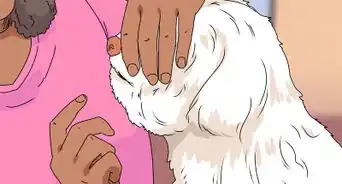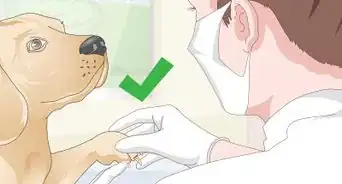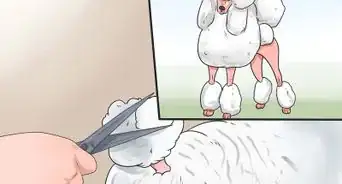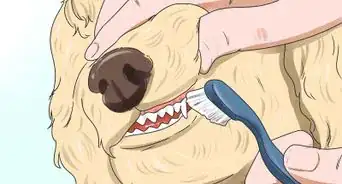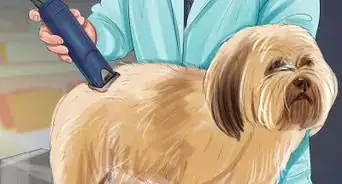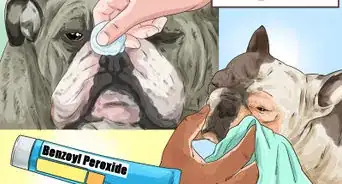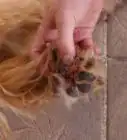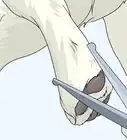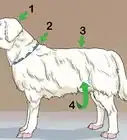This article was co-authored by Melissa Nelson, DVM, PhD. Dr. Nelson is a Veterinarian who specializes in Companion and Large Animal Medicine in Minnesota, where she has over 18 years of experience as a veterinarian in a rural clinic. She received her Doctor of Veterinary Medicine from the University of Minnesota in 1998.
There are 14 references cited in this article, which can be found at the bottom of the page.
This article has been viewed 102,796 times.
When a dog sheds, its hair can get everywhere! Instead of vacuuming up the hair that your dog leaves behind, you can actually vacuum the hair directly from your dog's body. To do this, you'll need to get your dog acclimated to the vacuum and purchase the proper pet grooming attachments so that you don't hurt it. Once you've gotten your dog used to the sound of the vacuum, it's simply a matter of running the proper attachment over its body to suck up loose hair.
Steps
Acclimating Your Dog to the Vacuum
-
1Purchase a quiet vacuum to calm your dog down. Look online or in a department store for vacuums that are made specifically to be quiet. The noise from the vacuum will irritate or scare away most dogs, and purchasing a vacuum on the quieter side may make them less stressed. Make sure that the vacuum you purchase works with whatever dog-vacuuming attachment that you purchase.
- Some popular brands include the Shark Rotator, Miele Dynamic U1 Cat & Dog, and Miele Dynamic U1 Jazz.[1]
-
2Turn the vacuum on near your dog. Since dogs have good hearing, the noise from the vacuum can irritate it. Your dog may be startled or scared at first, but exposing it to the vacuum cleaner’s noise should get it used to the sound. Put your dog in the same room as the vacuum and turn it on.[2]
- If the dog has had a bad experience with a vacuum, it may have developed a phobia and you'll have to spend more time getting it used to the vacuum cleaner.
Advertisement -
3Call your dog over to the vacuum. Call the dog over to the vacuum while it's on. If your dog is scared of the vacuum and refuses to come, turn it off and call the dog over to you. Continue to do this each day, until you can turn on the vacuum without scaring away your dog.[3]
- Getting your dog used to the vacuum while it’s off might ease its anxiety.
- It could take several weeks for your dog to get acclimated to the loud sound of the vacuum. Don’t get discouraged.
-
4Give your dog treats and positive reinforcement if it is still scared. Reward the dog with a treat if it doesn't run away and remains calm as you vacuum it. You can also pet your dog and tell it that it did a good job. The more positive you are around the vacuum, the less scared the dog will be.[4]
- When you call your dog over to the vacuum and give it a treat, you're showing it that there's nothing to fear.
- Negative reinforcement may confuse or scare away your dog, and shouldn't be used when training it to be calm when next to the vacuum.
Using a Dog Grooming Attachment
-
1Purchase a dog grooming attachment for your vacuum. The attachments that normally come with your vacuum could create a suction that could hurt your dog. Pet grooming attachments are made specifically to remove the hair from your dog’s coat and won't harm your dog. You can typically find these tools online or at a pet store. Before you install or use the attachment, read the directions that came with the product.[5]
- Popular pet grooming attachments include the FURminator Vacuum Attachment, Bissell Bark Bath, or Dyson Vacuum-Assisted Dog Groomer.
- Make sure that the vacuum attachment you purchase fits the model of vacuum you plan on using. This information can be found in the product description or instructions for the vacuum.
-
2Call your dog over to you. Turn the vacuum on and call your dog over to you. Do not force your dog to be around the vacuum if it is still scared. Make sure that the dog is dry before you vacuum it.[6]
- Having the dog sit or lie down may make it easier to vacuum the dog.
-
3Run the attachment over the dog’s back in one long motion. Start from the bottom of the dog’s neck and run the attachment over the dog's back and down to its tail. Move the vacuum with the grain so that you don't pull any hair out. Then, continue to vacuum the rest of the dog’s back using the same technique. Hold your dog by the collar to keep it still while you do this.[7]
- If the dog runs or looks distressed, take a break and try again later.
- Run the attachment over the area 1 or 2 times to completely lift up any loose hair.
- Don’t put the vacuum on or near your dog’s face, genitals, or rear end.
- Some attachments will have a button on the top of the attachment that sucks the hair into the vacuum when pressed. Gather as much hair as you can on the attachment, lift it off your dog, then press the button to suck up the hair.[8]
-
4Vacuum the dog’s legs. Have the dog stand or sit and run the attachment from the top of its shoulders or hips, down to the top of its feet. If your dog is moving its legs, hold its paw to keep it still. Run the attachment over each leg 2-3 times to lift up loose hair.[9]
-
5Vacuum the dog’s chest and belly. Run the attachment from the dog’s collarbone, down to its stomach. Repeat the grooming method until you lift up the loose hair on the underside of the dog. Once you're finished, you will have successfully vacuumed all the loose hair off your dog.[10]
- You can also have your dog roll over or play dead to make it easier to vacuum its stomach.
Establishing a Routine
-
1Give the dog a treat after vacuuming it. A dog treat will act as positive reinforcement and can reduce any existing anxieties that your dog associates with the vacuum. If your dog believes that it will get a treat after being vacuumed, it will be more likely to behave itself while you do it.[11]
- You can also reward the dog by saying "Great job" or by petting it.
-
2Vacuum your dog regularly. If you own a dog that has a longer coat, you'll want to vacuum your dog at least 2 times a month because dogs with long coats typically shed more heavily than short and medium haired dogs. If you have a dog with a medium or short coat, you can vacuum it once a month.[12]
- Vacuuming your dog acts as an alternative for brushing.
- Creating a regular routine will help you remember to vacuum your dog regularly.
- You may want to vacuum your dog more in fall and spring because dogs often shed more during these times.[13]
-
3Clean the vacuum after every use. Empty out the dog hair from the vacuum bag so that your vacuum works properly the next time you use it. Check the filter and brush roller on the vacuum cleaner and remove any twisted or bundled up hair.[14]
-
4Don't vacuum your dog if it's wet or muddy. The vacuum method is meant for grooming purposes and shouldn't be used to clean a dirty dog. Your vacuum may also not be suited for water, so avoid vacuuming it if it's wet or muddy.
- If your dog is muddy or dirty, you can give it a bath instead.
Warnings
- Don't force your dog to be near the vacuum if it's scared. Take your time and work with your dog until its anxiety goes away.⧼thumbs_response⧽
- Some dogs may never accept being groomed by vacuum. For those dogs, you may simply need to do it the old-fashioned way with a brush and a bit of patience.⧼thumbs_response⧽
References
- ↑ https://www.consumerreports.org/vacuum-cleaners/quietest-vacuums-from-consumer-reports-tests/
- ↑ http://dogcare.dailypuppy.com/ok-vacuum-dogs-hair-off-him-5731.html
- ↑ https://youtu.be/5oTIkQ91M2I?t=23s
- ↑ http://www.hintsandthings.co.uk/kennel/vacuum_groom.htm
- ↑ https://mashable.com/2017/03/29/dog-vacuum-is-here/#l8xwAIwWMiqq
- ↑ https://youtu.be/GZzh9eDOoKM?t=10s
- ↑ https://youtu.be/GZzh9eDOoKM?t=29s
- ↑ https://youtu.be/GZzh9eDOoKM?t=52s
- ↑ https://youtu.be/5oTIkQ91M2I?t=3m22s
- ↑ https://youtu.be/5oTIkQ91M2I?t=3m
- ↑ http://www.humanesociety.org/animals/dogs/tips/dog_training_positive_reinforcement.html
- ↑ https://www.rspcapetinsurance.org.au/pet-care/dog-care/dog-grooming-guide
- ↑ https://www.petcarerx.com/article/when-is-dog-shedding-season/1447
- ↑ https://www.puppyleaks.com/tips-cleaning-dog-hair/
About This Article
To vacuum your dog, start by purchasing a dog grooming attachment that fits your vacuum cleaner. Then, turn the vacuum on and off around your dog, and call it over to you while the vacuum is running to acclimate the dog to the vacuum. When your dog isn’t scared of the vacuum anymore, have it sit or lie down, then run the attachment over its back in one long motion. Start at the bottom of the dog’s neck and work your way down to its tail, moving with the grain of the dog’s fur. Finally, run the attachment over the dog’s back, legs, and belly once or twice to lift up any loose hair. To learn how often you should vacuum your dog, keep reading!
